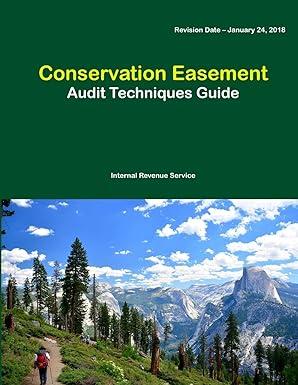Question
Alternatively, we can recognize that the capital gains yield measures capital appreciation, hence solve for the price in one year, then divide the change in
Alternatively, we can recognize that the capital gains yield measures capital appreciation, hence solve for the price in one year, then divide the change in price from today to one year from now by the current price. To find the price one year from now, we will have to find the present values of the horizon value and second year dividend at time period one. P 1 = P 2 + D 2 (1 + rs) P 1 = $61.0560 + $2.3040 1.10 P 1 = $57.60 Cap. gain yield = (P1 P0) / P0 Cap. gain yield = $3.49 / $54.1091 Cap. gain yield = 6.45% b. Now assume that TTC's period of supernormal growth is to last for 5 years rather than 2 years. How would this affect the price, dividend yield, and capital gains yield? 1. Find the price today. D0 $1.60 rs 10.0% gs 20% Short-run g; for Years 1-5 only. gn 6% Long-run g; for Year 6 and all following years. 20% 6% Year 0 1 2 3 4 5 6 Dividend $4.2202 PV of dividends $4.2202 = Horizon value = P5 = = P0 4.0% = rs gn Part 2. Find the expected dividend yield. Dividend yield = D1 / P0 Dividend yield = $0.0000 / $0.0000 Dividend yield = Part 3. Find the expected capital gains yield. Cap. gain yield = Expected total return - Dividend yield Cap. gain yield = 10.0% - 0.00% Cap. gain yield = c. What will TTC's dividend and capital gains yields be once its period of supernormal growth ends? (Hint: These values will be the same regardless of whether you examine the case of 2 or 5 years of supernormal growth; the calculations are very easy.) We used the 5-year supernormal growth scenario for this calculation, but ultimately it does not matter which example you use, as they both yield the same result. Dividend yield = DN+1 / PN Dividend yield = $4.2202 / $0.0000 Dividend yield = Cap. gain yield = Expected total return - Dividend yield Cap. gain yield = 10.0% - 0.0% Cap. gain yield = Upon reflection, we see that these calculations were unnecessary because the constant growth assumption holds that the long-term growth rate is the dividend growth rate and the capital gains yield, hence we could have simply subtracted the long-run growth rate from the required return to find the dividend yield. d. TTC recently introduced a new line of products that has been wildly successful. On the basis of this success and anticipated future success, the following free cash flows were projected: Year FCF (in millions) 1 $5.5 2 $12.1 3 $23.8 4 $44.1 5 $69.0 6 $88.8 7 $107.5 8 $128.9 9 $147.1 10 $161.3 After the 10th year, TTC's financial planners anticipate that its free cash flow will grow at a constant rate of 6%. Also, the firm concluded that the new product caused the WACC to fall to 9%. The market value of TTC's debt is $1,200 million; it uses no preferred stock; and there are 20 million shares of common stock outstanding. Use the corporate valuation model approach to value the stock. INPUT DATA: (Dollars in Millions) WACC 9% gn 6% Millions of shares 20 MV of debt $1,200 Year 0 1 2 3 4 5 6 7 8 9 10 11 FCF's $5.5 $12.1 $23.8 $44.1 $69.0 $88.8 $107.5 $128.9 $147.1 $161.3 PV of FCF's PV of FCF1-10 = HV at Year 10 of FCF after Year 10 = FCF11/(WACC gn): PV of HV at Year 0 = HV/(1+WACC)10: Sum = Value of the Total Corporation Less: MV of Debt and Preferred Value of Common Equity Number of Shares (in Millions) to Divide By: Value per Share = Value of Common Equity/No. Shares: versus using the discounted dividend model The price as estimated by the corporate valuation method differs from the discounted dividends method because different assumptions are built into the two situations. If we had projected financial statements, found both dividends and free cash flow from those projected statements, and applied the two methods, then the prices produced would have been identical. As it stands, though, the two prices were based on somewhat different assumptions, hence different prices were obtained. Note especially that in the FCF model we assumed a WACC of 9% versus a cost of equity of 10% for the discounted dividend model. That would obviously tend to raise the price.
Step by Step Solution
There are 3 Steps involved in it
Step: 1

Get Instant Access to Expert-Tailored Solutions
See step-by-step solutions with expert insights and AI powered tools for academic success
Step: 2

Step: 3

Ace Your Homework with AI
Get the answers you need in no time with our AI-driven, step-by-step assistance
Get Started


